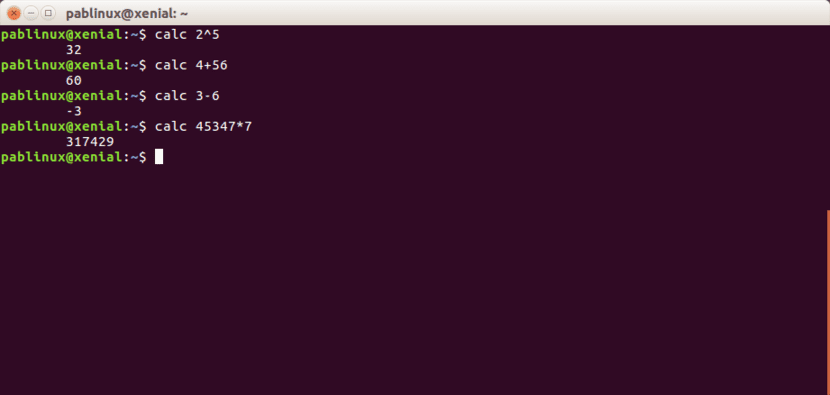
In Linux-based operating systems there is something that many of us love and others hate: the terminal. From the terminal we can do practically everything, but on many occasions it will be necessary to know many commands, which is why many end up doing everything with an application with a graphical interface. A perfect example would be using a calculator, but wouldn't it be curious to be able to calculate directly from that dreaded terminal by many? This will be possible thanks to apcalc.
Originally called Calc, Apcalc (Arbitrari precision calculator) is a small program that will allow us to perform mathematical operations from a terminal window. Its use is very simple: once installed, we will only have to open a terminal and write "Calc" followed by the operation that we want to do, such as "calc 2 * 2". The result will appear in a new line and will not disappear unless we close the window (or use a command like "clear").
How to install Apcalc
Being in the default repositories, we can install Apcalc in several ways. For me, the best way to install any software that I know the name of is via terminal, for which we would have to open a window and write the following command:
sudo apt install apcalc
For those who have never used a calculator of this type, it is worth remembering which keys to use to perform some of the most common operations:
- The sum will be the "+" symbol near the Enter key.
- The subtraction is the dash next to the right Shift or Shift.
- Multiply is the "*" symbol near Enter.
- Divide will be the "/" symbol.
- To raise a number to a power, we will have to write the first number, then write the symbol «^», which will not appear until we press the space bar once, and finally the number of the power. For example, 2 ^ 3 will give us 8.
- For more information, write the command «calc help».
What do you think to calculate with Apcalc?
Vía: Diego's blog
There is also the command bc